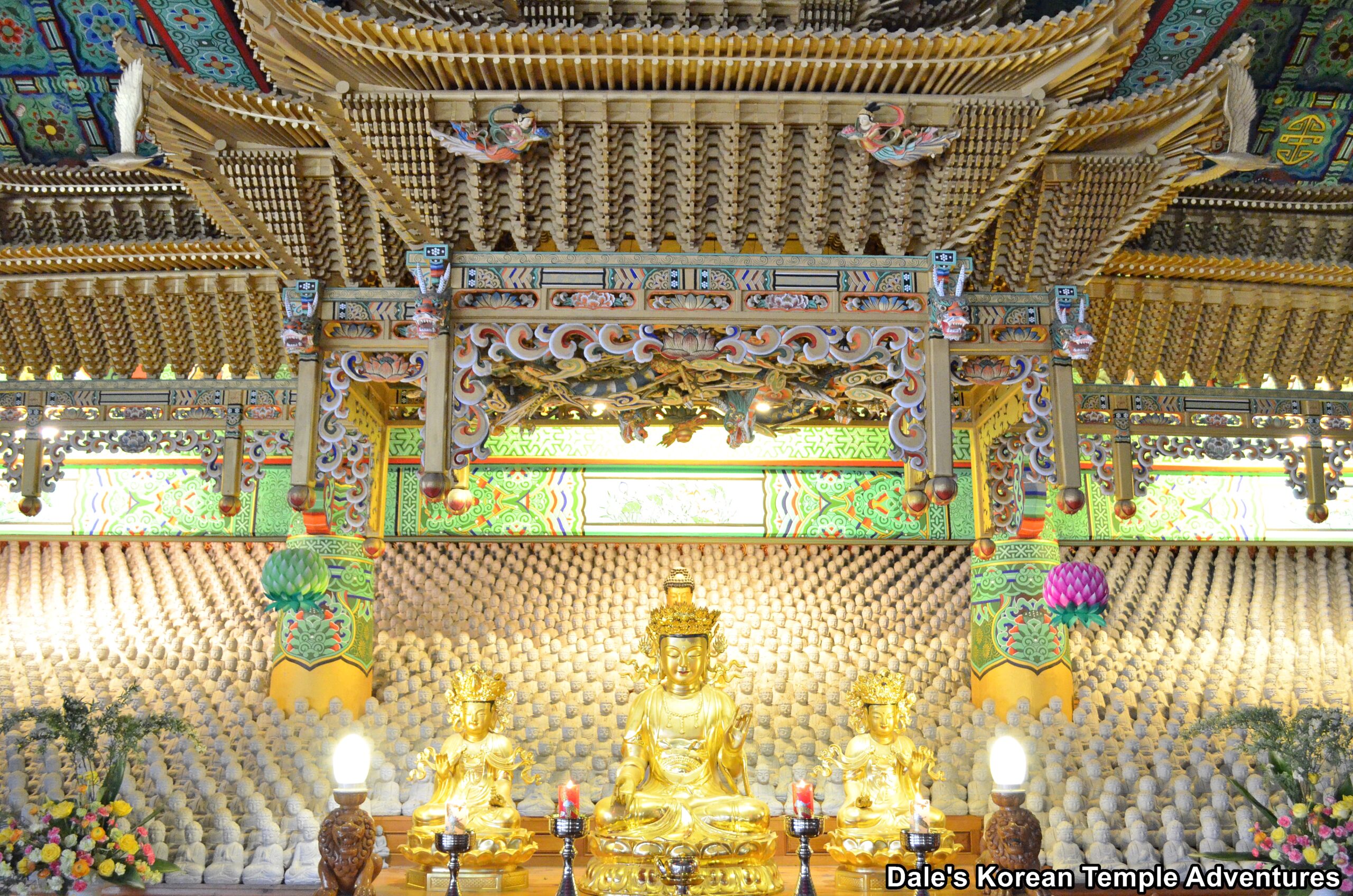
Temple History
Seongjusa Temple is located in the northwestern foothills of Mt. Bulmosan (801.1 m) in Changwon, Gyeongsangnam-do. The name of the temple, Seongjusa Temple, means “Saint Abides Temple” in English. The temple was first built in 835 A.D. by the monk Muyeom-guksa (801-888 A.D.). Muyeom-guksa was said to be the eighth-generation descendant of King Muyeol of Silla (r. 654-661 A.D.). Muyeom-guksa was an advisor to the king. Because King Heungdeok of Silla (826-836 A.D.) was able to defeat the Japanese as a result of Muyeom-guksa’s mystical powers, the king gave Muyeom-guksa land to build a temple. This temple would become known as Seongjusa Temple. What’s also interesting about this temple and its association with Muyeom-guksa is that the famed monk also built another temple with the same name in Boryeong, Chungcheongnam-do. Originally the temple in Boryeong was named Ohapsa Temple; but when Muyeom-guksa became the abbot of the temple after returning from time in Tang China (618-907 A.D.), he renamed it Seongjusa Temple. Now this temple is a temple site, the Seongjusa-ji Temple Site, but it was also previously one of the Seonjong Gusan – Nine Mountain Seon Sect, and it would also be the largest temple at this time. So it’s a rather interesting feature of the two temples built by the same master monk.
Unfortunately, Seongjusa Temple was destroyed in 1592 by the Japanese during the Imjin War (1592-98). The temple would later be rebuilt and expanded between 1674 and 1834. Rather interestingly, the temple is also known as “Ungsinsa Temple,” or “Bear Saint Temple” in English. And the reason for this is a legend that surrounds the temple after the Imjin War. This legend states that a bear appeared to help move all the wood required to rebuild the temple in its current location and configuration. That’s why you’ll find at least three different murals at the temple of bears helping rebuild Seongjusa Temple.
In total, Seongjusa Temple is home to two Korean Treasures. They are the Wooden Seated Sakyamuni Buddha Triad of Seongjusa Temple, which is Korean Treasure #1729. And the other Korean Treasure is the Buddhist Painting of Seongjusa Temple, Changwon (The King of Sweet Dew), which is Korean Treasure #1732. Seongjusa Temple is also home to several provincial treasures including the Daeung-jeon Hall, which is Gyeongsangnam-do Tangible Cultural Heritage #134; the Bronze Bell of Seongjusa Temple, which is Gyeongsangnam-do Tangible Cultural Heritage #257; the Standing Gwanseeum-bosal Statue of Seongjusa Temple, which is Gyeongsangnam-do Tangible Cultural Heritage #335; and the Three-Storied Stone Pagoda of Seongjusa Temple, which is Gyeongsangnam-do Tangible Cultural Heritage #25.
Temple Layout
You first approach Seongjusa temple through a beautiful forested trail. It’s not all that long, perhaps a couple hundred metres long, but it’s a beautiful walk all the same. Along the way, you’ll find a small budowon, as well as some ancient graffiti adorning the faces of several large stones. As you emerge on the other side of the forested trail, you’ll be welcomed to the temple by a smaller sized bell pavilion to your left. Housed inside this diminutive Jong-ru Pavilion is the Bronze Bell of Seongjusa Temple. This bell dates back to 1783 and stands 111 cm in height. The top of the bell, which is known as a yongnyu in Korean, is adorned with two dragon heads. The side of the bell is adorned with Bodhisattvas and Sanskrit writing. Just to the right of the Jong-ru Pavilion, and slightly up the hillside, is a five-story stone pagoda that’s framed by a pair of seokdeung (stone lanterns). The base of this newly built pagoda is adorned with the Eight Legions, while the finial to the stone lanterns are quite slender in size. And framing this entire lower courtyard is a water fountain that shoots several small rivulets of water into the air.
Just to the right of the pond and its water fountain is the main entrance to the temple grounds and its temple shrine halls. Passing to the right of the pond and the unpainted Boje-ru Pavilion is the spacious temple courtyard. Straight ahead of you are three smaller sized shrine halls. In the centre of the three is the Daeung-jeon Hall, which dates back to 1681. The exterior walls are largely adorned with fading dancheong, but there are a couple paintings dedciated to the saintly bear from the temple legend. And out in front of the Daeung-jeon Hall is the Three-Storied Stone Pagoda of Seongjusa Temple, which is believed to date back to the Goryeo Dynasty (918-1392), but it still retains the style of Unified Silla (668-935 A.D.). It’s believed that this pagoda was moved from its former location about 500 metres northwest of Seongjusa Temple, and it was moved to its current location more recently.
As for the interior, and resting on the main altar, is the Wooden Seated Sakyamuni Buddha Triad of Seongjusa Temple. This triad consists of Seokgamoni-bul (The Historical Buddha) in the centre and joined on either side by Amita-bul (The Buddha of the Western Paradise) and Yaksayeorae-bul (The Buddha of the Eastern Paradise, and the Buddha of Medicine). This triad represents the Buddhas of the Three Ages. This triad was highly popular during the early 17th century. A document was found inside one of the statues that indicates that the statues were first created in the spring of 1655 and were completed in the fall of the same year. The triad was completed by a group of monk sculptures that were headed by the monk Nokwon.
To the left of the Daeung-jeon Hall is the Samseong-gak Hall. Immediately when you first enter the Samseong-gak Hall, you’ll be greeted by an older-looking mural dedicated to Dokseong (The Lonely Saint). This older painting of Dokseong has a stout nose and pig-like features. He’s joined to the left by two rather traditional-looking paintings of Chilseong (The Seven Stars) and Sanshin (The Mountain Spirit). What truly stands out, other than the older Dokseong mural, inside the shaman shrine hall are the murals that adorn the interior walls. There are murals dedicated to Yongwang (The Dragon King), Dokseong, dragons, and guardians. These murals adorn every square inch inside the Samseong-gak Hall.
To the right of the main hall, on the other hand, is the newly constructed Nahan-jeon Hall. This plainly adorned exterior looks to have replaced the former Myeongbu-jeon Hall. Stepping inside the Nahan-jeon Hall, you’ll find a main altar triad centred by a stout statue dedicated to Seokgamoni-bul and joined on either side by equally stout statues dedicated to Jijang-bosal (The Bodhisattva of the Afterlife) and Gwanseeum-bosal (The Bodhisattva of Compassion). This triad is joined on either side by traditional statues of the Nahan (The Historical Disciples of the Buddha). But the real highlight inside the Nahan-jeon Hall are the masterful paintings backing the statues of the Nahan.
The other shrine hall in this area is the Seolbeop-jeon Hall. Housed inside this long hall are row-upon-row of granite statues dedicated to various incarnations of the Buddha. In the middle of these stone statues is a large golden image of Amita-bul. And this solitary image of the golden Amita-bul in an ocean of granite Buddhas is fronted by a triad centred by Amita-bul and joined on either side by Gwanseeum-bosal and Daesaeji-bosal (The Bodhisattva of Wisdom and Power for Amita-bul). And all the statues appear under a large, golden datjib (canopy) with floating Bicheon (Flying Heavenly Deities) and swirling, protective dragons.
Just to the right of the Seolbeop-jeon Hall, and in a courtyard of its own, is the Myeongbu-jeon Hall. This hall houses a large statue of a green haired Jijang-bosal. He’s joined on all sides by equally large statues of the Siwang (The Ten Kings of the Underworld). The most interesting feature of the Myeongbu-jeon Hall, however, is the Buddhist Painting of Seongjusa Temple, Changwon (The King of Sweet Dew). The painting dates back to 1729, and it was made by a group of painters led by Seongjing. This painting is quite different than other late-Joseon Dynasty paintings of the same subject in terms of its overall composition. Typically, this style of painting is divided into three sections: the upper, middle, and lower sections. In this painting, the upper section consists of the Seven Buddhas, as well as Gwanseeum-bosal. The middle section of the painting features Jijang-bosal and Illowang-bosal (The Guiding Bodhisattva). Additionally, the scene of death rites are shown, as well as Agwi (Hungry Ghosts) and monks. And in the bottom section of the painting, there are various scenes in the life of a man and his death. What separates this painting from other Gamno-do (Sweet Dew Mural) are two key features. The first is the absence of death rites, while the other is the altar and official presiding over these death rites. Another unique feature is that the pavilion symbolizing Paradise is placed in the top right of the painting, while the Seven Buddhas are strongly emphasized. And finally, the combat scene in the painting isn’t a ground battle, which is customary; but instead, it’s a naval battle. There are three other paintings that omit the scene of death rites. The oldest of these three is the Gamno-do at Jikjisa Temple in Gimcheon, Gyeongsangbuk-do, which was painted in 1724. Like the Gamno-do at Seongjusa Temple, the painting at Jikjisa Temple was painted under the leadership of the monk-artist Seongjing. Therefore, it’s believed that the Gamno-do was used as a model for the painting at Seongjusa Temple. But what makes the Gamno-do at Seongjusa Temple invaluable is that the location of the Gamno-do at Jikjisa Temple is currently unknown.
In addition to the contents of the Myeongbu-jeon Hall, the exterior walls of this shrine hall are adorned with beautiful murals that include the Banya Yongseon-do (The Dragon Ship of Wisdom), as well as a rather peculiar modern Gamno-do that includes images of a murderer, the consumption of alcohol, and a car accident, which are all a modern twist on the traditional images and scenes from the Joseon Dynasty (1392-1910).
Above the Myeongbu-jeon Hall sits the final shrine hall at Seongjusa Temple. This is a new building with a plain exterior. Inside this hall is a stone statue dedicated to Gwanseeum-bosal. The Standing Gwanseeum-bosal Statue of Seongjusa Temple is Gyeongsangnam-do Tangible Cultural Heritage #335. This statue of the Bodhisattva of Compassion is believed to date back to the Goryeo Dynasty (918-1392).
How To Get There
The easiest way to get to Seongjusa Temple is to take a taxi from the Changwon Intercity Bus Terminal. The drive should take about 20 minutes over 11 km, and it should cost about 14,000 won.
Overall Rating: 7.5/10
For a lesser known temple, Seongjusa Temple in Changwon, Gyeongsangnam-do definitely has quite a few highlights. Of course these include the main altar statues inside the Daeung-jeon Hall and the Gamno-do (Sweet Dew Mural), which are both Korean Treasures. But it also includes the Daeung-jeon Hall itself, the murals inside the Samseong-gak Hall (especially the Dokseong mural), the Nahan-jeon Hall murals, and the stonework throughout the temple grounds. There is plenty of beautiful architecture and artistry to enjoy at Seongjusa Temple.

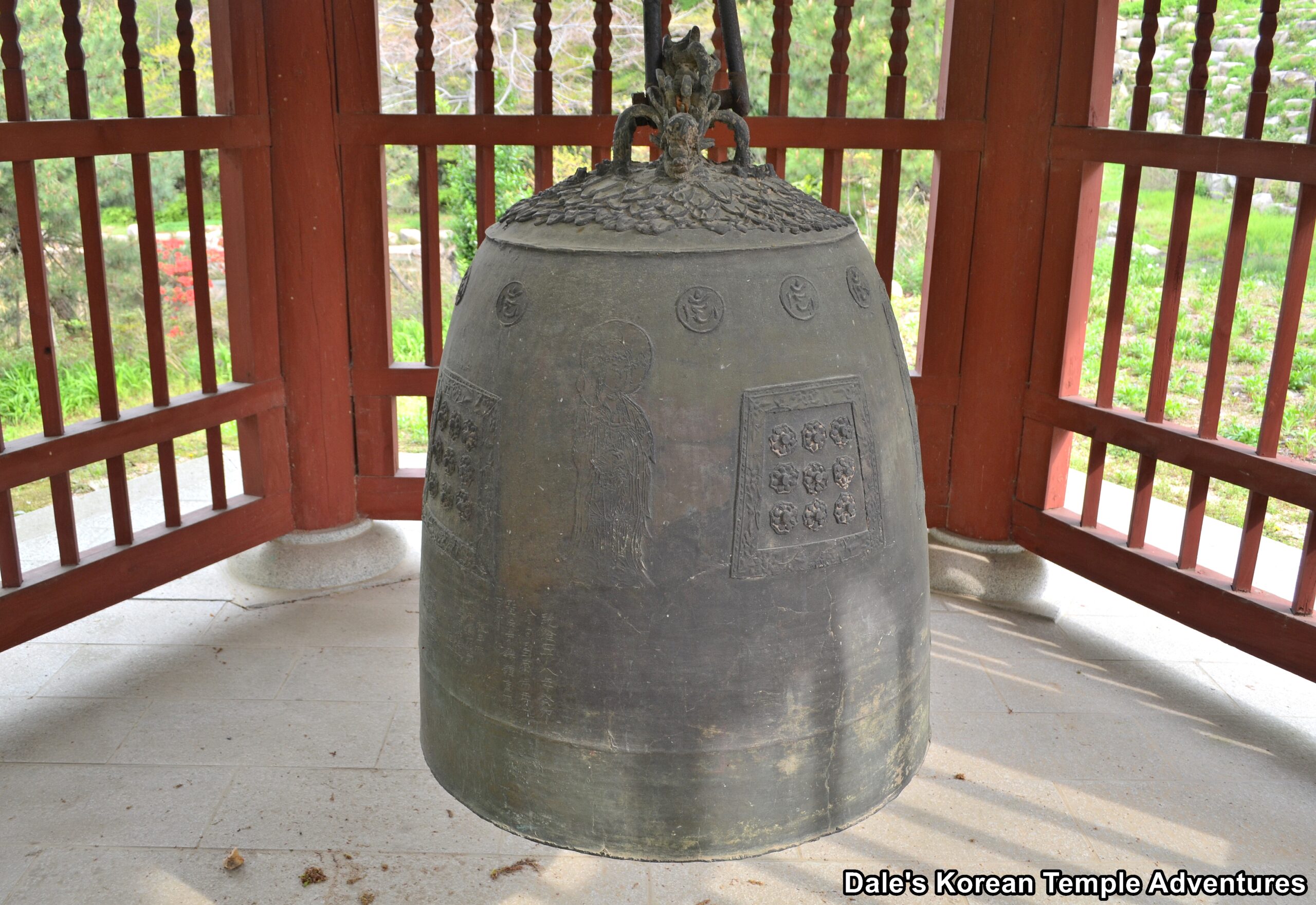
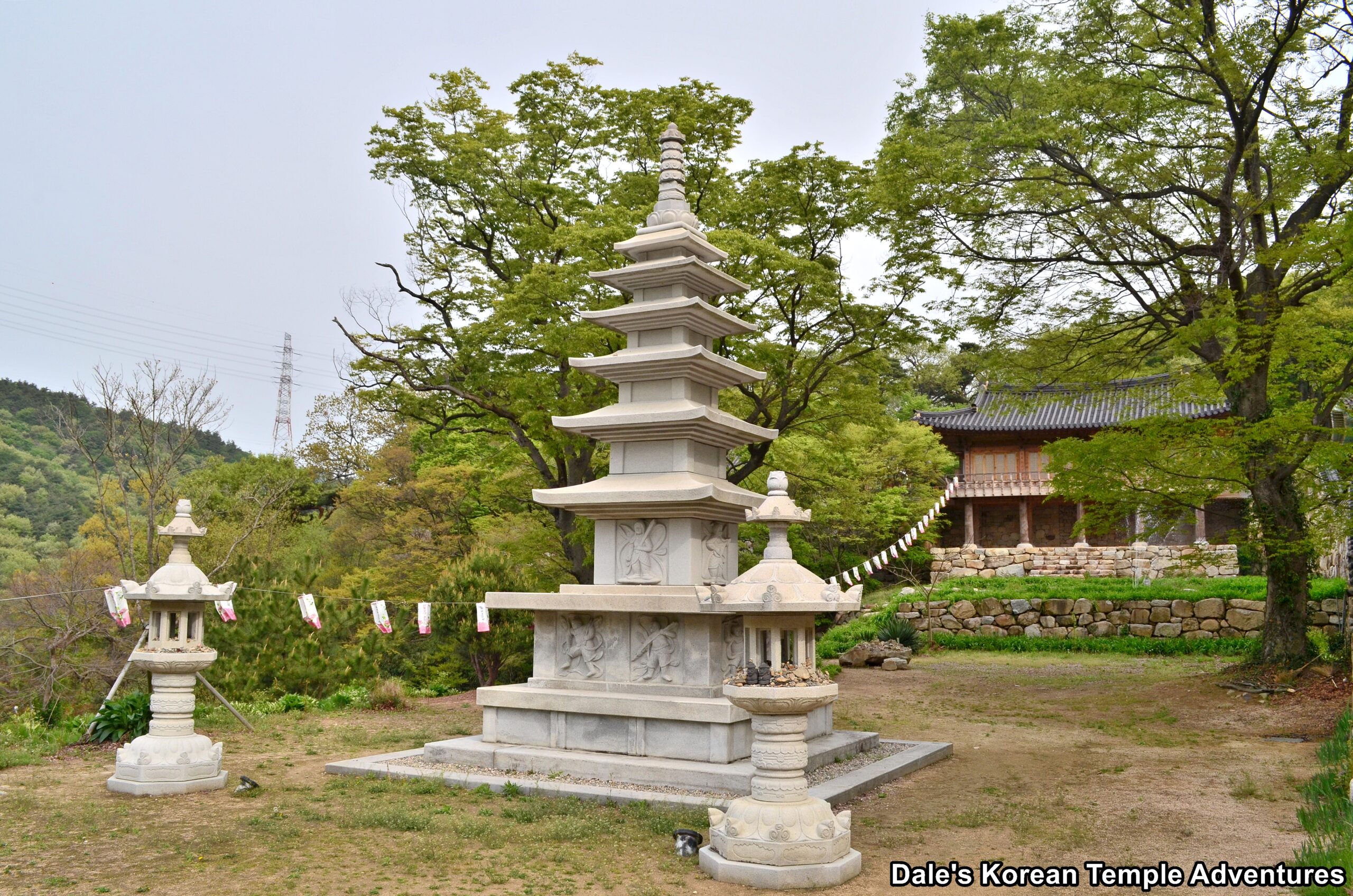
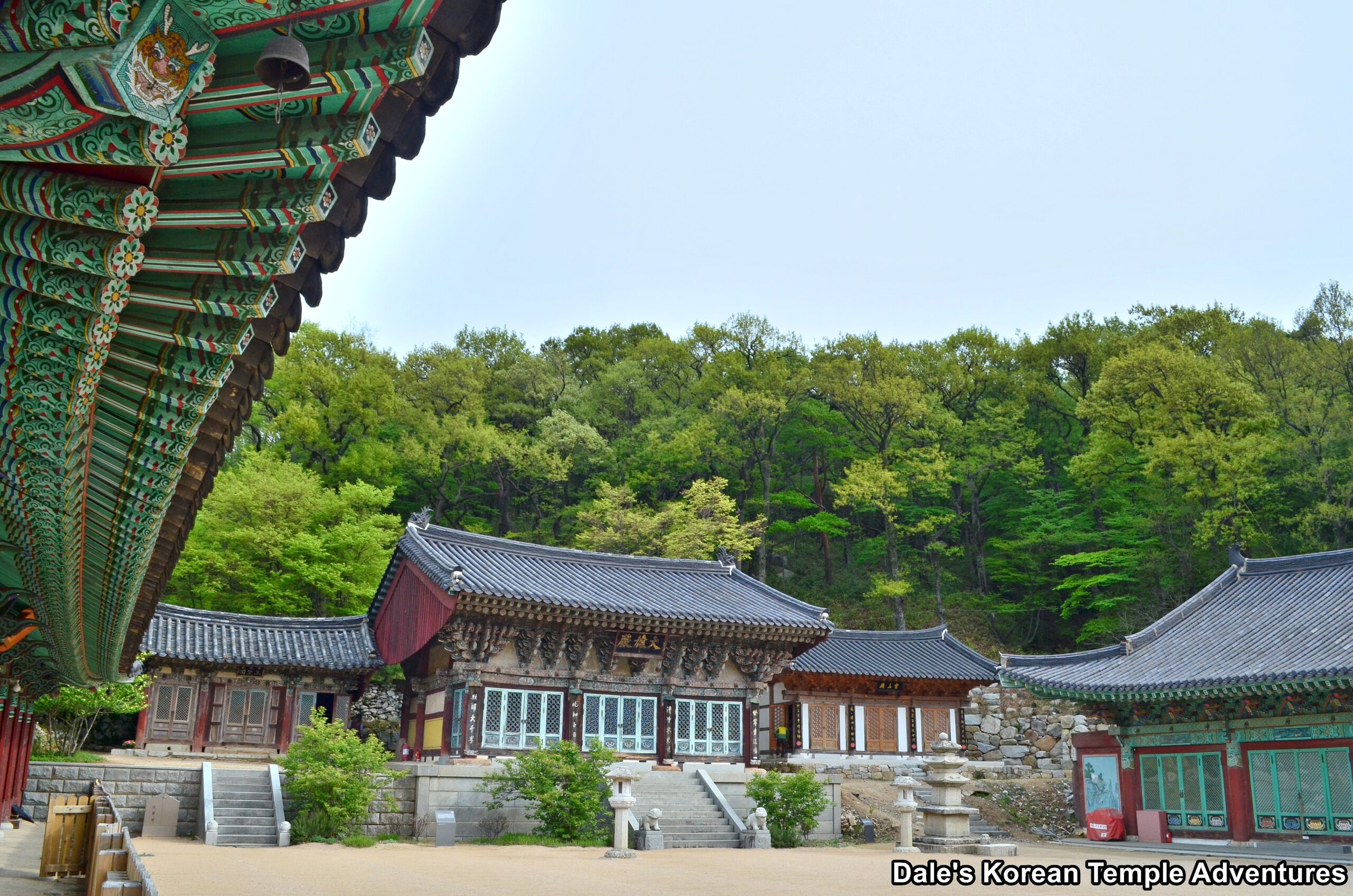
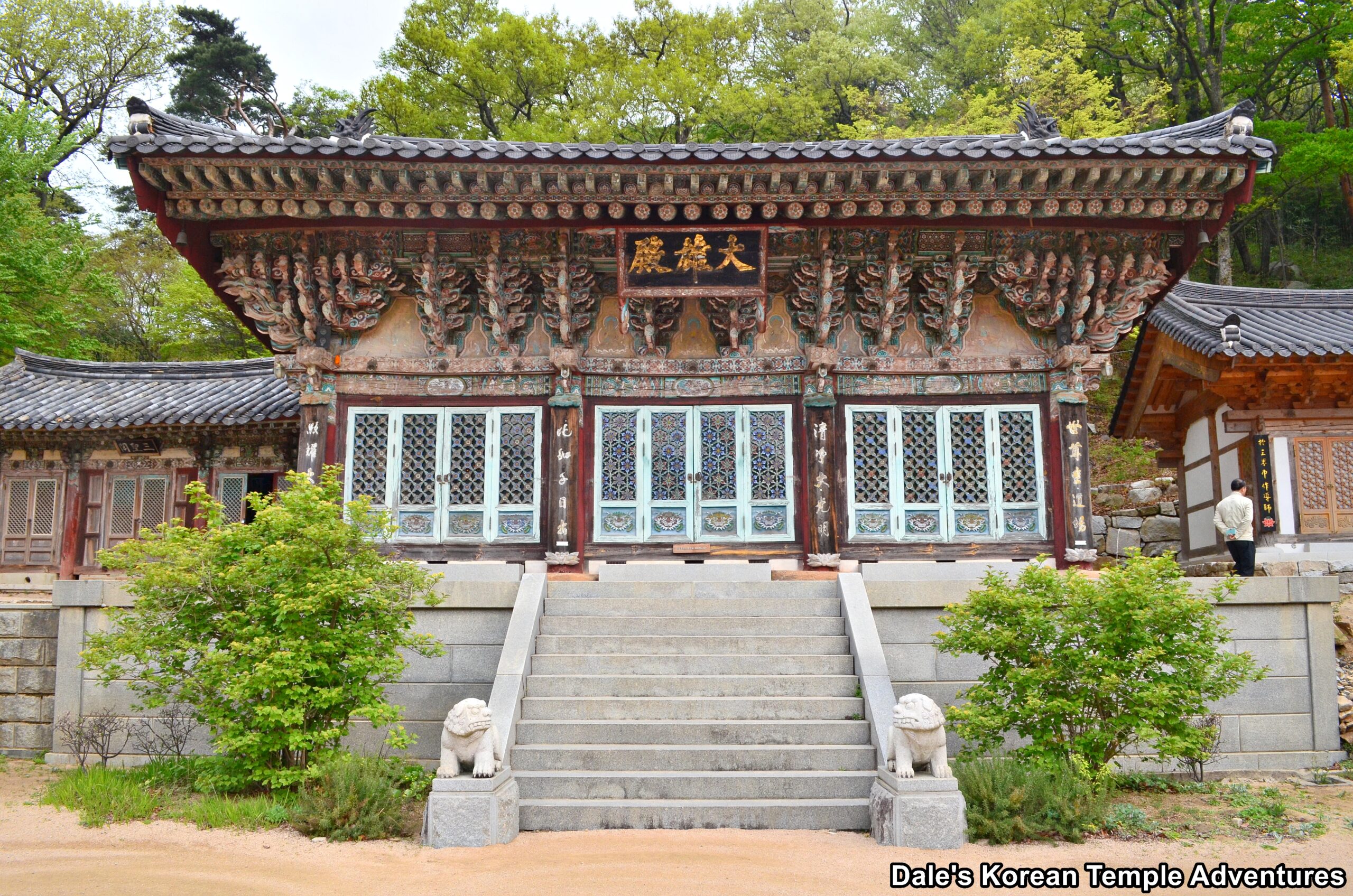
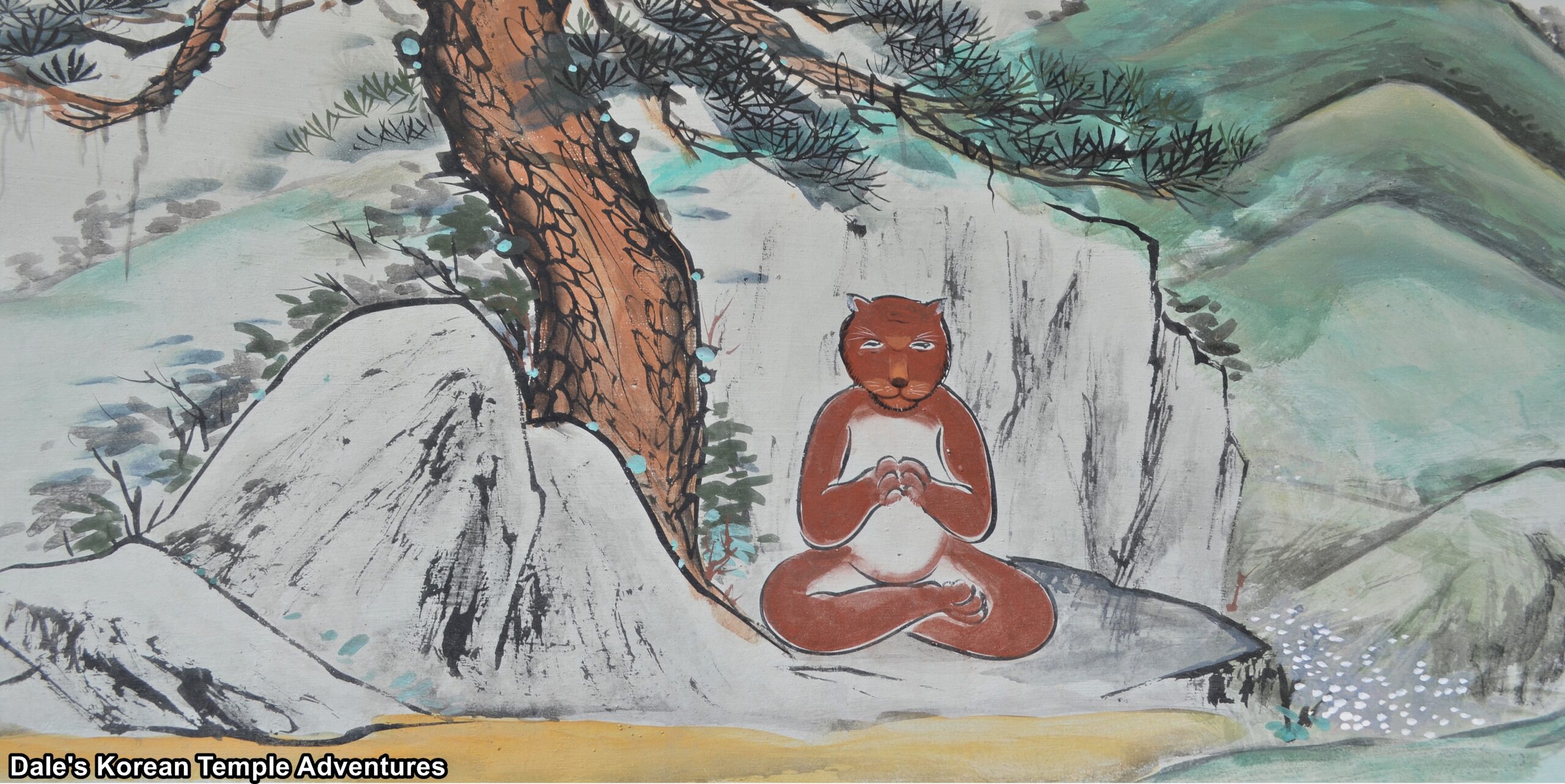
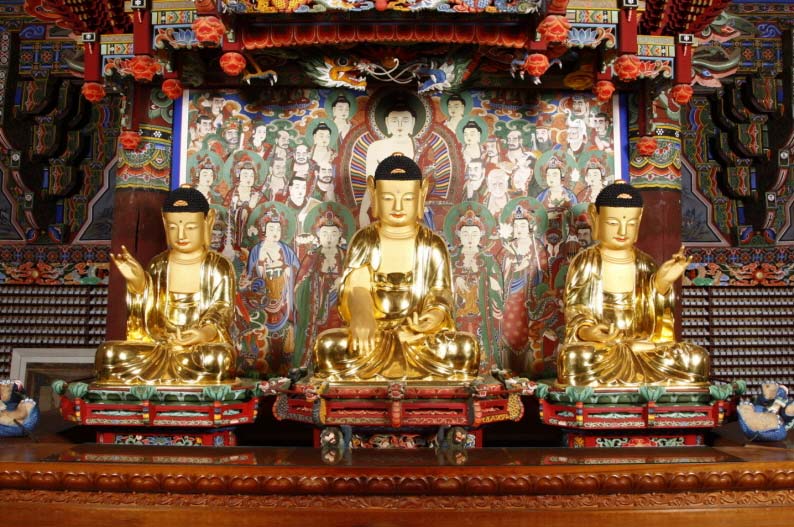
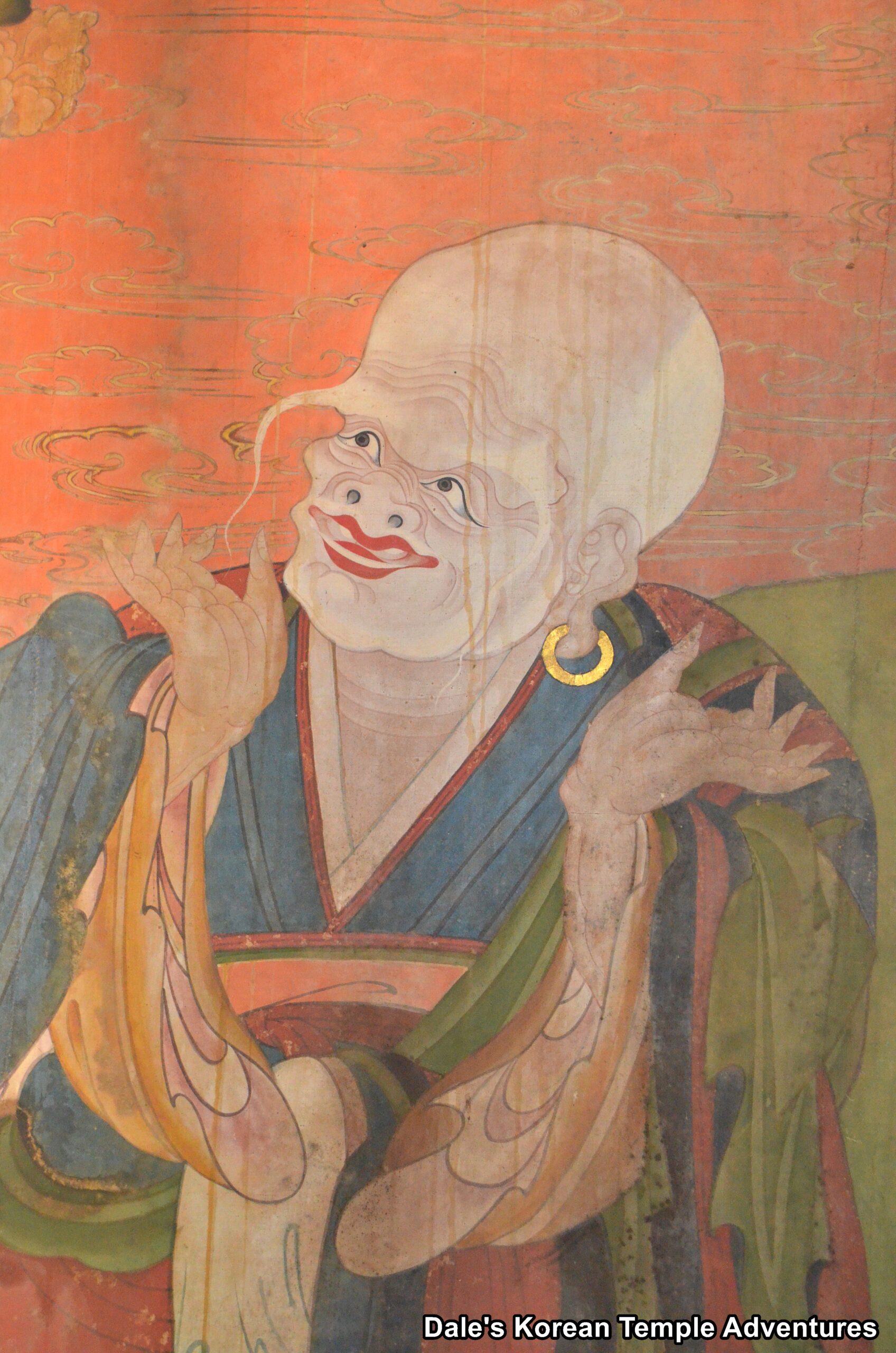
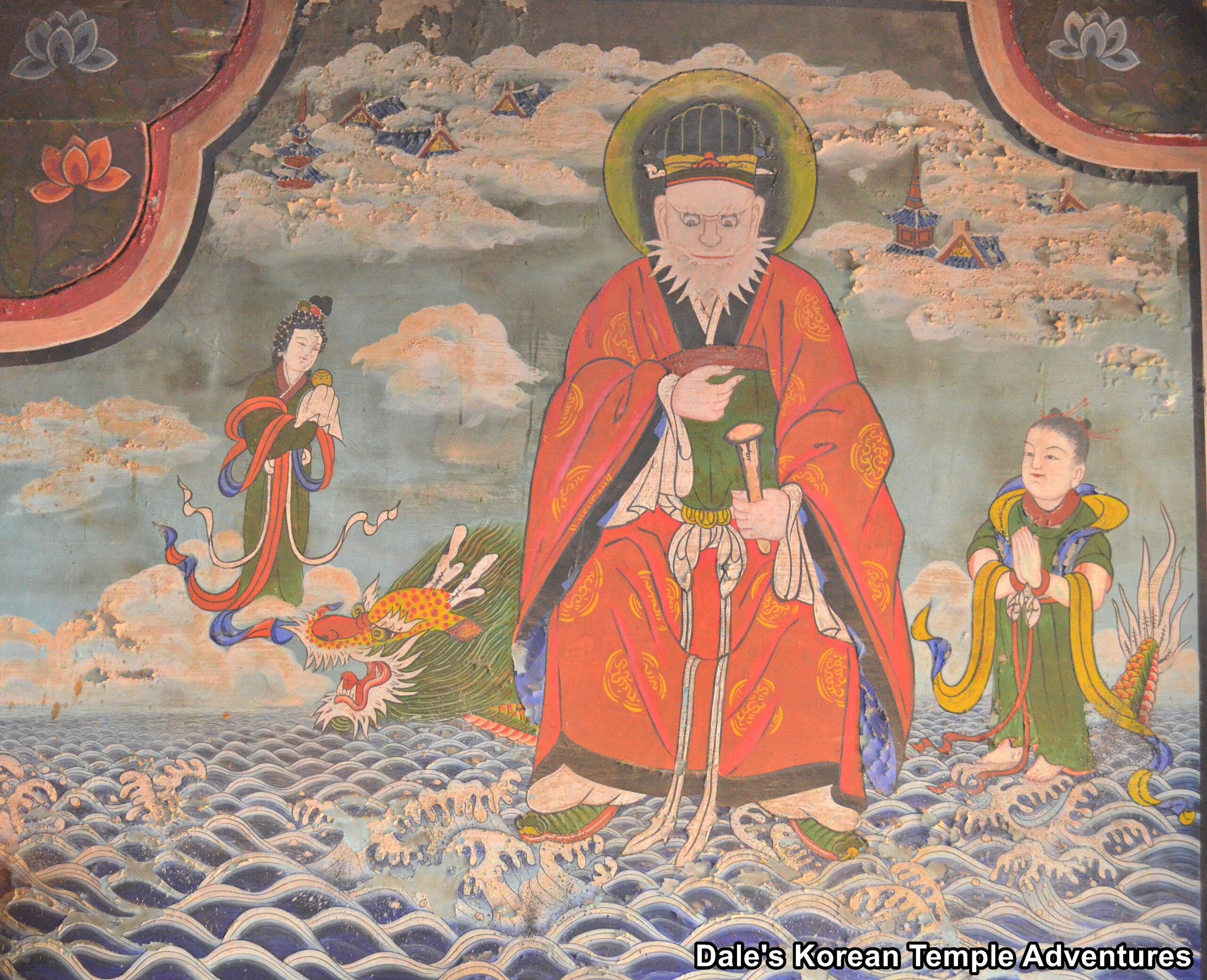
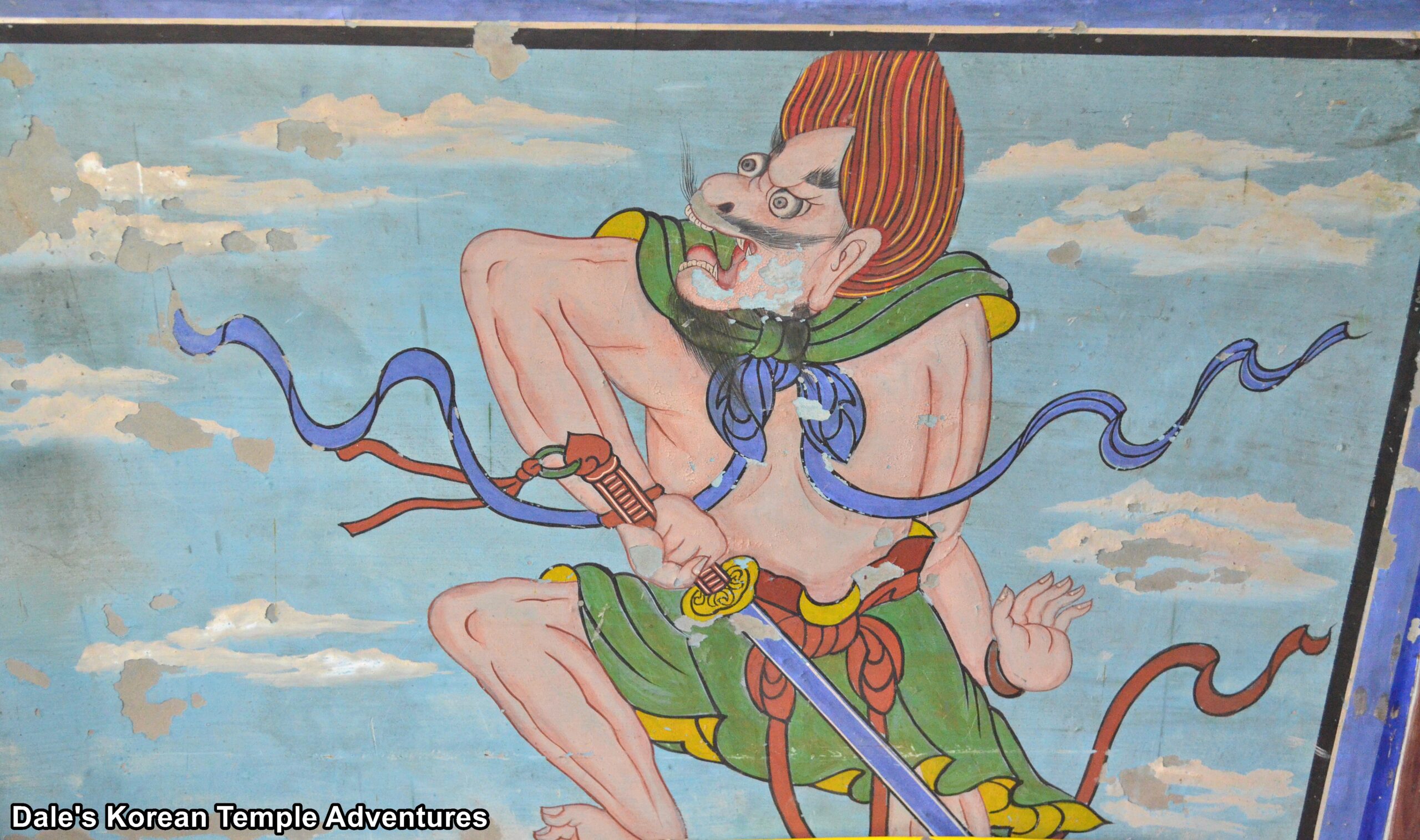
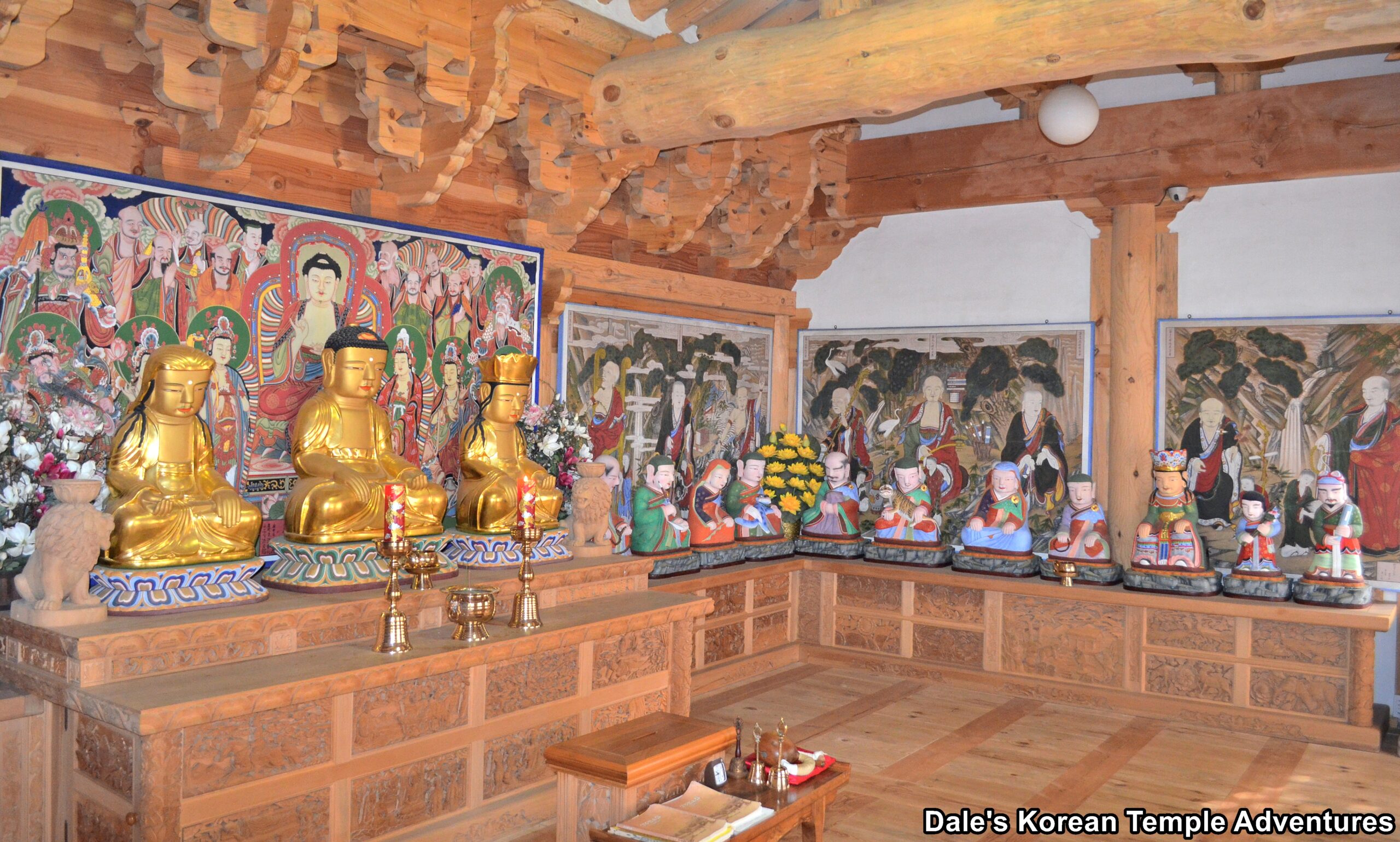
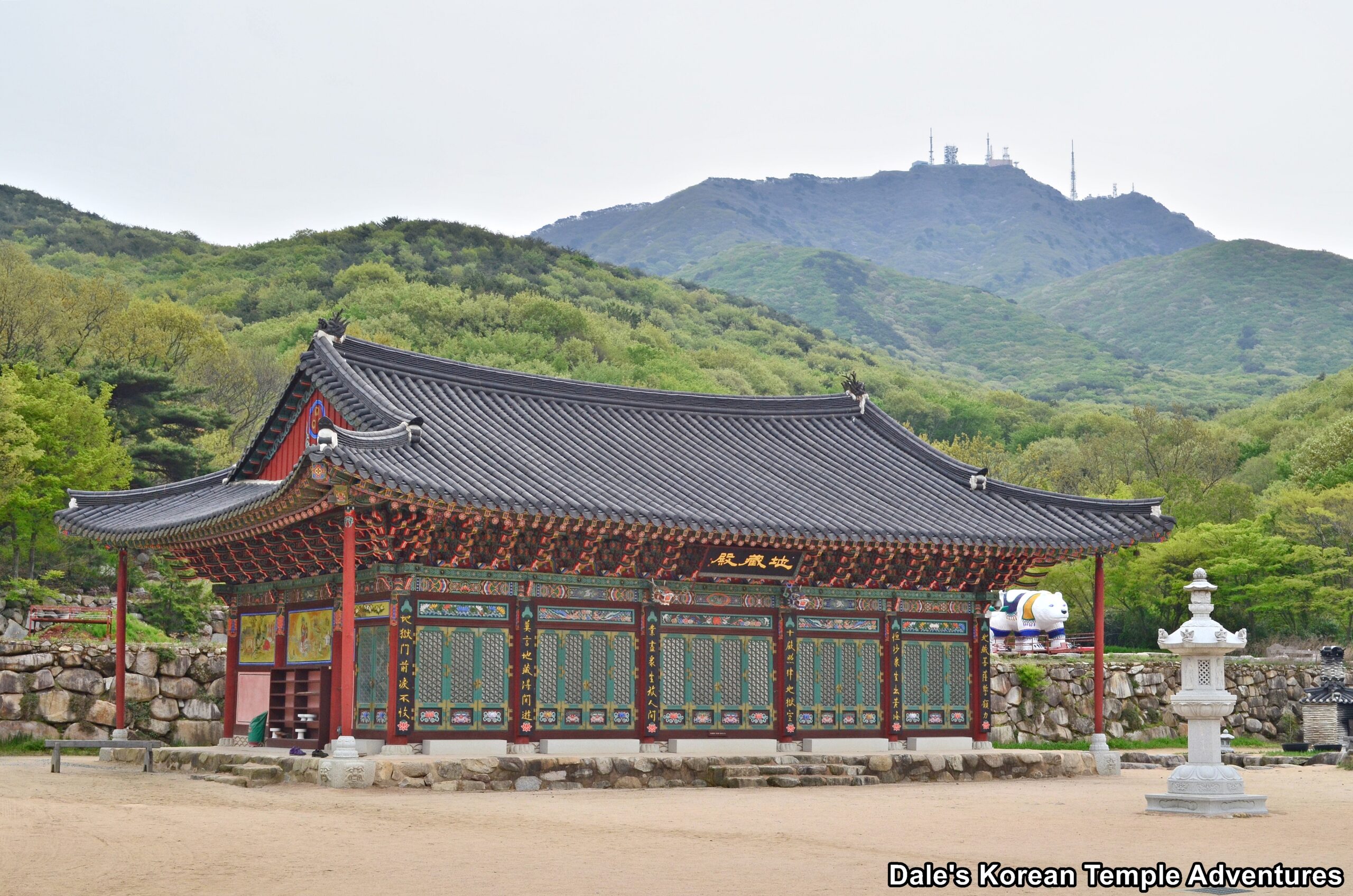
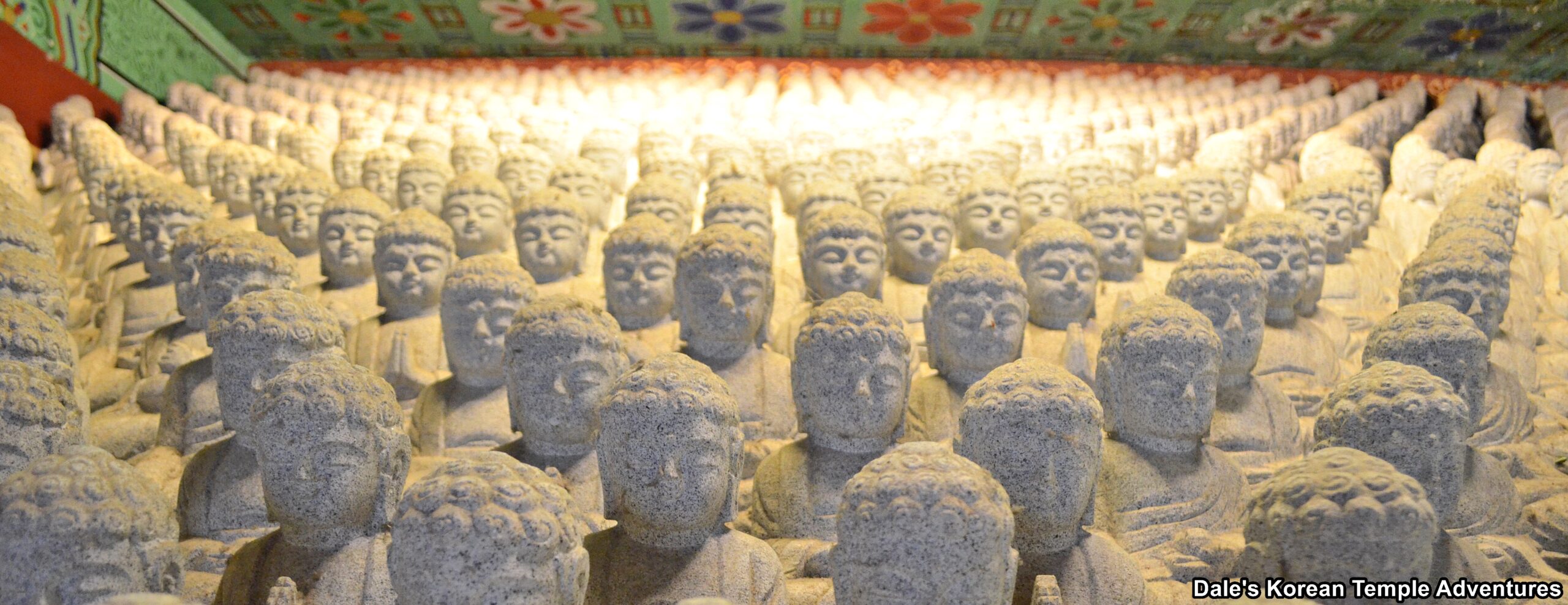
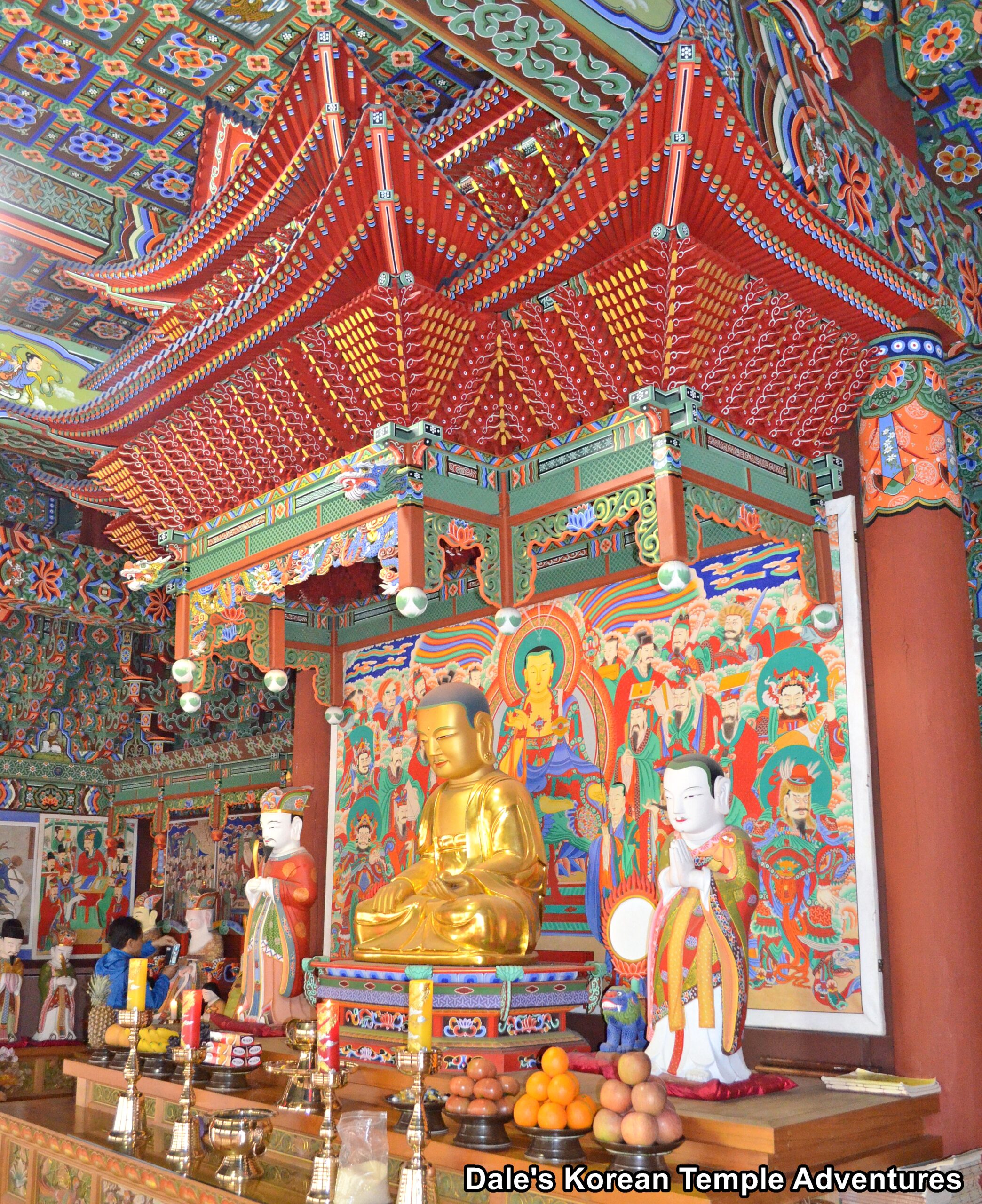
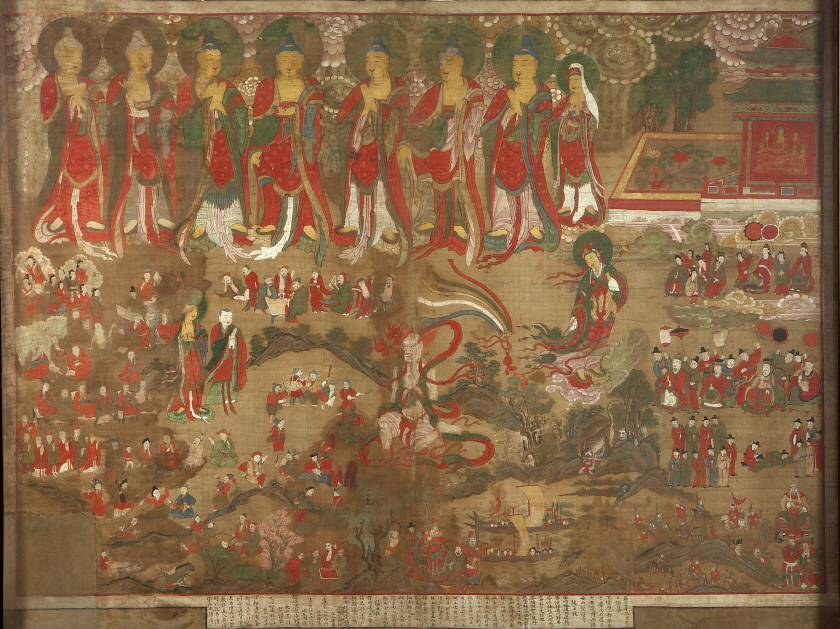
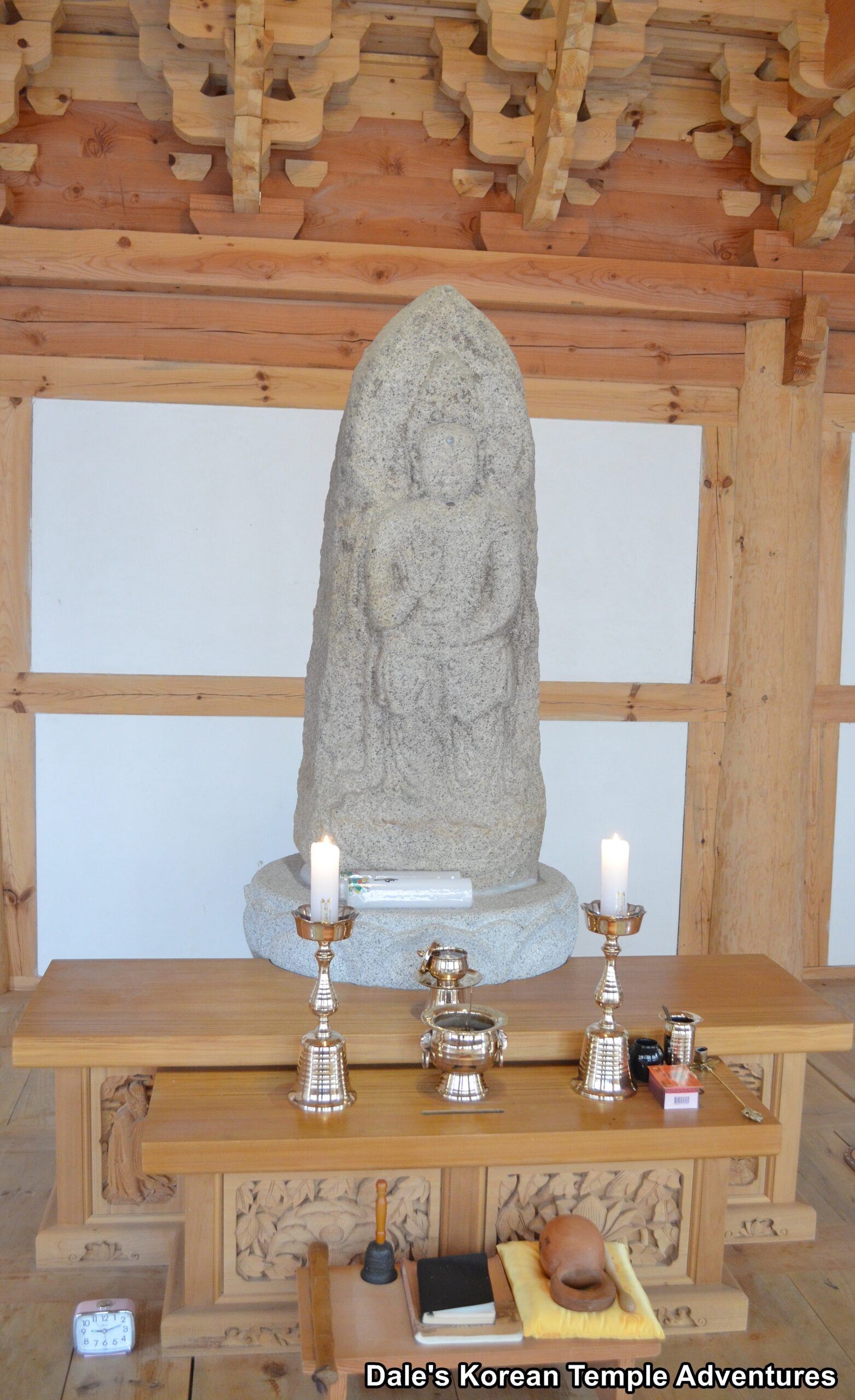


Recent comments